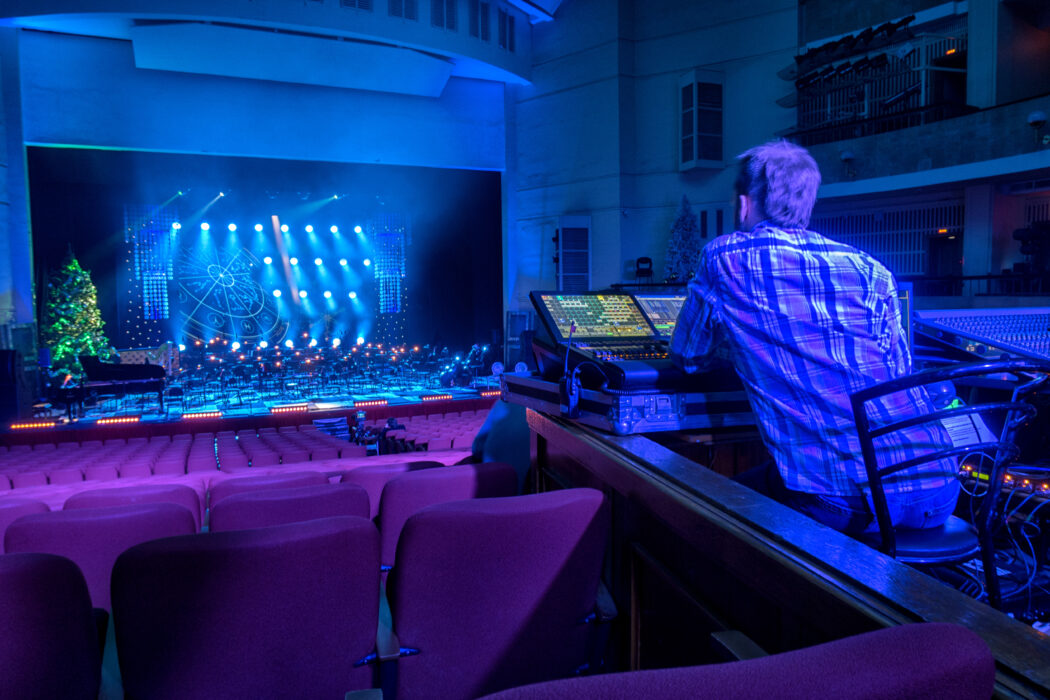The Strong Interest Inventory (SII) is designed to help people choose a career in which they will be satisfied and feel fulfilled. Over the better half of a century, it has provided invaluable insights to tens of thousands of people worldwide. The interest inventory compares an individual’s vocational preferences and strengths to those of professionals already working in a broad range of careers. The Strong Interest Inventory Assessment also categorizes trades based on shared features to provide additional context. The six categories are: Realistic, Investigative, Artistic, Social, Enterprising, and Conventional. Collectively, these are often represented as the “RIASEC Hexagon.” Adjacent categories within the RIASEC Hexagon are more similar to each other than those which are opposing categories.
Set Designers are considered Artistic careers. These professionals design and build sets for film, television, and theater productions. The design process has many steps and stages. It typically starts with the Set Designers reading the script and scheduling a kick-off meeting with the directors and writers. The goals of this initial meeting are to discuss the script and review relevant themes, make a list of the necessary sets, evaluate budgets and timelines, research background information, and begin to brainstorm possible locations. Set Designers may also conduct additional research as needed. For example, they may need to learn more about medieval England’s architectural elements and style to build a compelling setting for a production of King Arthur and the Knights of the Round Table.

Read about a career as a set designer, including information such as set designer salary, daily tasks, and other career information.
The next step is for the Set Designers to start creating preliminary sketches or computer-generated renderings of the sets, including detailed layouts, construction dimensions, material specifications, and so on. They may also need to consider lighting, special effects, performer entrances and exits, and other design factors. Once their proposal is complete, Set Designers submit their plans to the Director and other stakeholders for approval. If they receive feedback or changes, they may need to revise and resubmit their proposal. It is not uncommon for proposed design plans to undergo several rounds of review and revision before approval. In some cases, this process may involve additional modeling, including detailed scale models, “bigatures,” or close-up drawings.
Set Designers oversee the construction of the sets themselves, from constructing the initial frame and laying foundations to selecting furnishings like pictures, lamps, rugs, and light fixtures. They even inspect completed settings for compliance with given specifications and constraints. Additional considerations may include location issues (e.g., space, traffic flow, safety), environmental concerns (e.g., temperature, humidity), hardware and construction factors (e.g., lumber amount and type), set breakdown and disposal, and more.
Set Designers must also be on-site during rehearsals and production meetings. During these events, their responsibility is to note any feedback that may require changes to the sets, for instance, if a set element is interfering with camera angles, effects crews, or cast movement. They may also need to inform other crew members of relevant set details, like if there is a trap door meant to facilitate a particular actor’s entrance or exit.
Successful set designers may need to be familiar with different types of software, depending on their organization and specific responsibilities. Examples include computer-aided design software (e.g., Autodesk AutoCAD, Trimble SketchUp Pro), database management software (e.g., Microsoft SQL Server, Oracle PL/SQLR), and publishing software (e.g., Adobe InDesign), graphics and video editing software (e.g., Adobe Illustrator, Adobe Photoshop, Adobe Creative Cloud), in addition to standard office software (e.g., web browsers, e-mail, word processors, presentation software, spreadsheet software, etc.) Set Designers’ education levels vary widely: 33% hold a Bachelor’s degree, 33% hold a master’s, and 10% have completed some college without a degree.
As of 2021, the median salary for Set Designers in the United States was $54,860 annually, which comes to $26.37 hourly. This wage varies widely around the country depending on the demand. In low-demand states like Louisiana, the median salary is as low as $38,000 per year, while in high-demand states like New York, the median is nearly $80,000, with the top 10% of earners making almost $130,000 per year. As of 2020, there are 29,700 Set Designers employed in the United States, with a projected growth of 5-10% by 2030.
Below are some employment trends for Set Designers:
- Median Salary: $54,860 annually; $26.37 hourly
- Employment: 29,700 employees
- Projected growth (2020-2030): Average (5%-10%)
- Projected job openings (2020-2030): 3,100
Visit Our Myers-Briggs Type Indicator® Career Resource Database for Information on MBTI® Personality Type Careers
To Learn More About the Myers-Briggs Type Indicator, visit our About MBTI Test Page
Visit Our Validity and Reliability Factual Strong Interest Inventory® Page
Assessment Categories
References
- Bureau of Labor Statistics wage data and 2012-2022 employment projections Onetonline.org









